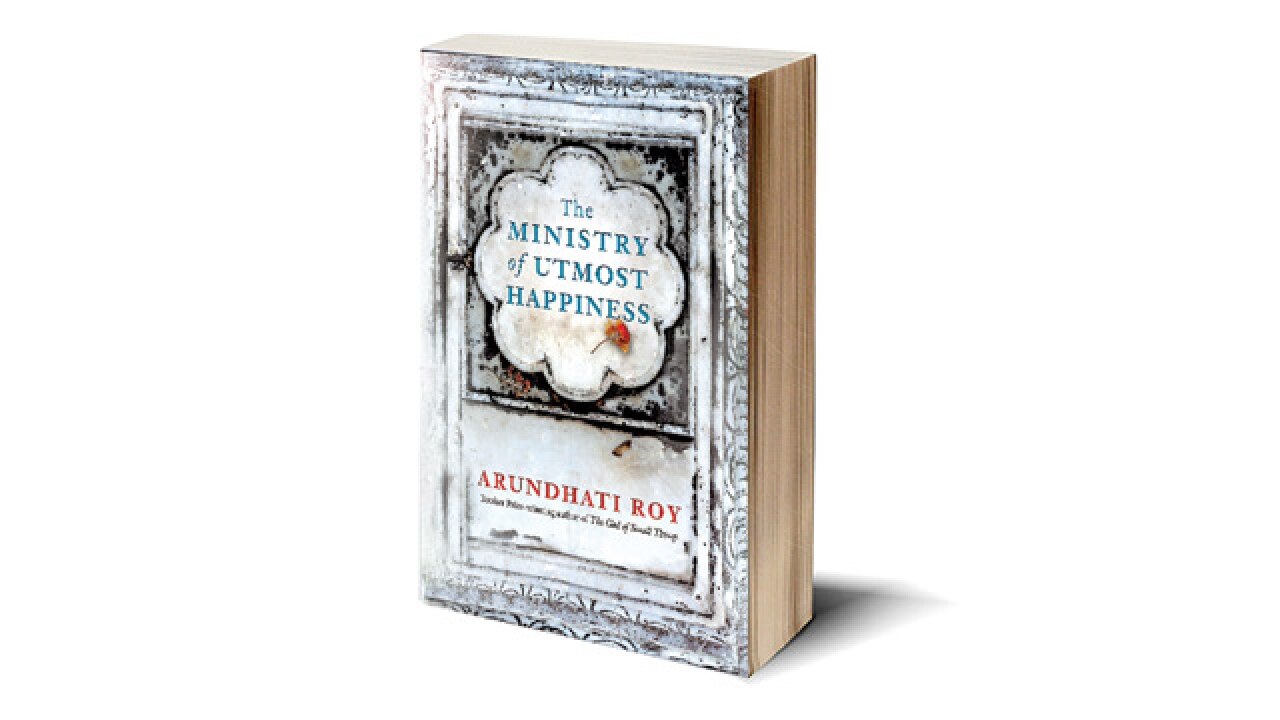
Is this book as good as The God of Small Things? – that's probably the one thing that readers who loved Arundhati Roy's debut novel would want to know about The Ministry of Ultimate Happiness. And the honest answer is: Roy's second novel is a very different animal from her first – not just in 'subject matter', tone and emotional trajectory, but also in its very ambition, in what Roy wants to achieve with it.
Reduced to its essential plot, The God of Small Things was a family saga, however much the fate of its characters was buffeted by larger social/political winds, especially caste.
The new, much awaited Ministry... is more diffuse in contrast. It opens in old Delhi with Anjum, the transgender and the novel's protagonist – if only because it begins and ends with her, even though she's invisible for most of the middle. The action then moves to Jantar Mantar, Delhi's protest square, but it's only a brief pit-stop before it shifts again to Kashmir, to the love story of the beauteous Tilo and the mysterious Musa, framed against the conflict situation in the Valley.
But plot and character seem to be of secondary importance in this novel. What seems more important is sketching a sweeping canvas packed with issues, events and controversies of contemporary significance. And Roy packs in as many as she can - diclofenac and its role in the disappearance of vultures; the marginalisation of Muslims; 9/11; Godhra and the 2002 Gujarat riots; the practice of pharmaceutical companies testing chemicals on dogs; the steel sculptures of Subodh Gupta; mob violence in the name of cow slaughter; Anna Hazare and his anti-corruption movement (even Arvind Kejriwal gets a look in), the Bhopal gas leak and anti-Sikh riots of 1984; the Maoist insurgency. It seems like Roy was trying not so much to write a novel as to create an allegory to fit the many dystopias that form India today.
Of course, Roy has spent the last 20 years raising these issues – she's raged against the nuclear bomb, war and big capital; visited with the Naxals and Edward Snowden; campaigned with Medha Patkar against the displacement of people by dams; spoken out in favour of the marginalised, persecuted, outcaste; and spoken out whenever fundamental freedoms have been violated. And she has done it with rare eloquence - the sharp edge of her pen peeling off the layers, as it were, of the hypocrisies that underlie the Indian state, its iniquitous democracy. Her outpourings have read wonderfully as magazine essays, and have done well when these have been spun out into slim volumes. But do they work as a novel? They do, if you think of the 'MUT' as an allegory. Looked at thus, one can allow for the broad brush storytelling, disjointed structure, frequent lapses into didacticism and unsubtle irony of names such as Saddam Hussein and Dr Azad Bhartiya.
In one respect, however, fans of God... will not be disappointed – Roy, the luminous stylist of the English language, remains intact. The sentences in Ministry... are as poetic, as passionate and as incisive as ever in their evaluation of the human condition.